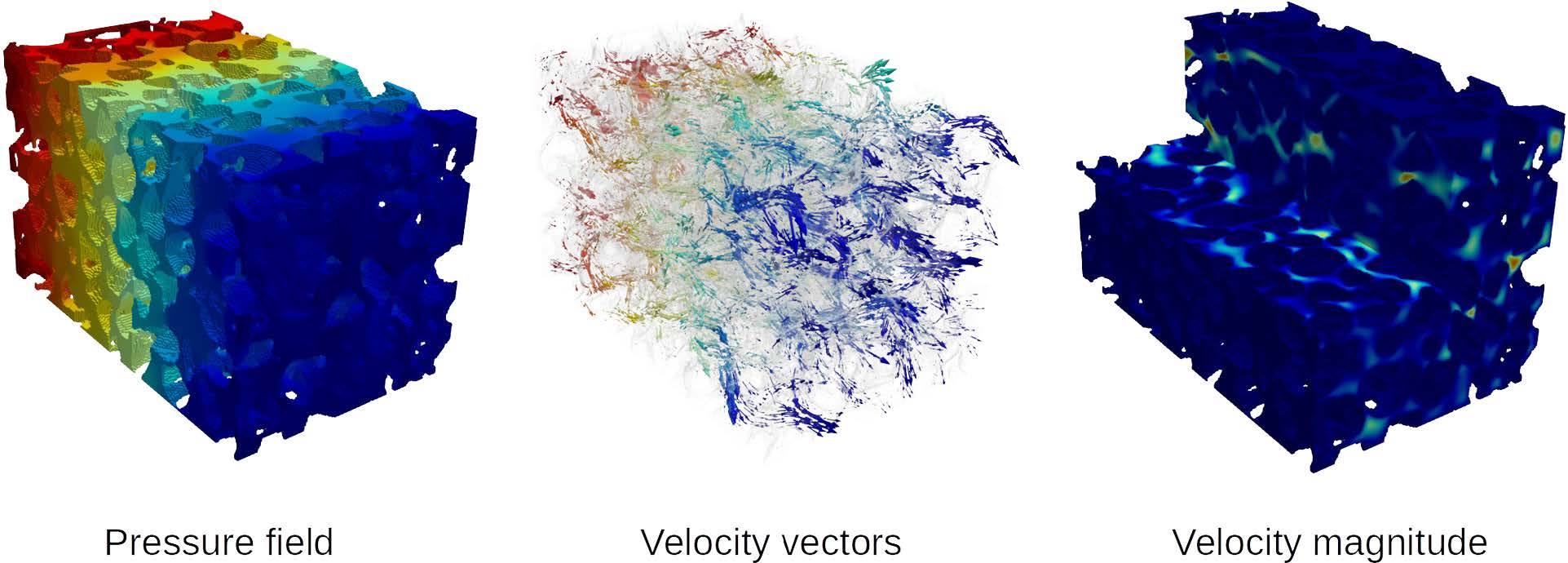Introduction To Open Source Computational Fluid Dynamics Using OpenFOAM® Technology (Cyprien Soulaine, Associate Scientist at the CNRS)
In less than a decade, OpenFOAM® (www.openfoam.com) became a major simulation platform for research related to flow and transport in porous media at various scales of interest. OpenFOAM® is an open-source Computational Fluid Dynamics package that solves a large spectrum of partial differential equations. OpenFOAM is a versatile scientific package that can solve both single and multiphase flow at the pore-scale (Navier-Stokes) and at larger scales (Darcy). OpenFOAM® includes solvers for a wide variety of flows including multiphase flow, turbulent flow, complex and non-Newtonian flow, and reactive flow. Thanks to its numerical efficiency, OpenFOAM can model flow processes in the exact three-dimensional geometry of a rock sample – an approach known as Digital Rock Physics. One of the major assets of OpenFOAM® is the possibility to customize the source code and implement new models based on partial differential equations. This short course aims at discovering this simulation platform through a series of lectures and live demonstrations. Most of the exercises concern porous media physics either at porescale or at Darcy’s scale. Beyond this objective, the course is also an introduction to computational microfluidics and Digital Rock Physics.
OpenFOAM® includes solvers for a wide variety of flows including multiphase flow, turbulent flow, complex and non-Newtonian flow, and reactive flow. Thanks to its numerical efficiency, OpenFOAM can model flow processes in the exact three-dimensional geometry of a rock sample – an approach known as Digital Rock Physics. One of the major assets of OpenFOAM® is the possibility to customize the source code and implement new models based on partial differential equations.
This short course aims at discovering this simulation platform through a series of lectures and live demonstrations. Most of the exercises concern porous media physics either at porescale or at Darcy’s scale. Beyond this objective, the course is also an introduction to computational microfluidics and Digital Rock Physics.
Please note that course access links and materials will be sent via email once payment is received. Links to watch the courses will be activated for you for 60 days. If you have paid for this course and have not received this information within 1-2 business days, please contact margaret.dieter@interpore.org.
Lecturer:
Cyprien Soulaine, Associate Scientist at CNRS, the French National Centre for Scientific Research
Course registration fee for recorded viewing:
Interpore members: 50€ students, 75€ academic, 150€ industry
Interpore non-members: 62.50€ students, 80€ academic, 150€ industry
Course Objectives:
- Introduction to the simulation platform OpenFOAM®
- Run existing tutorials and adapt them to your needs
- Program your own solver based on the OpenFOAM® library
- Motivate you to use OpenFOAM for your own research
Lesson Plan
- General introduction to OpenFOAM®
- First simulations (setup a case, run a case, post-process with ParaView or Gnuplot):
- Heat transfer
- Cavity / Poiseuille flow
- Drainage/Imbibition experiments in a capillary
- Import mesh from an external gridder
- Complex mesh generation with OpenFOAM®
- How to mesh a complex geometry with snappyHexMesh?
- Absolute permeability calculations
- Program partial differential equations with OpenFOAM®
- General organisation of an OpenFOAM® application
- Basics of OpenFOAM programming
- Heat transfer in porous media with OpenFOAM®
- Program a « Darcy » solver
- Heat transfer in porous media
Prerequisite:
Familiarity with the basis of fluid dynamics, and flow in transport in porous media, Interest in code development.
About the Lecturer:
Cyprien Soulaine is an Associate Scientist at CNRS, the French National Centre for Scientific Research, working at the Institute of Earth Sciences of Orléans. Cyprien has a PhD in fluid dynamics from the Institut de Mécanique des Fluides de Toulouse, France. His research interests concern the modeling of flow and transport in porous media at pore-scale and its translation to larger scales. He is considering processes that occur over a wide variety of scales ranging from nanometers to kilometers. They include multiphase flow, complex and non-Newtonian flow, reactive transport modeling, and superfluid. Cyprien uses OpenFOAM® since 2009 for his own research. He is at the origin of several numerical tools based on this library to solve complex physics in porous media at the pore-scale and at larger scales. He delivered OpenFOAM® training classes to more than a hundred students, researchers, and engineers both in academia and industry.


